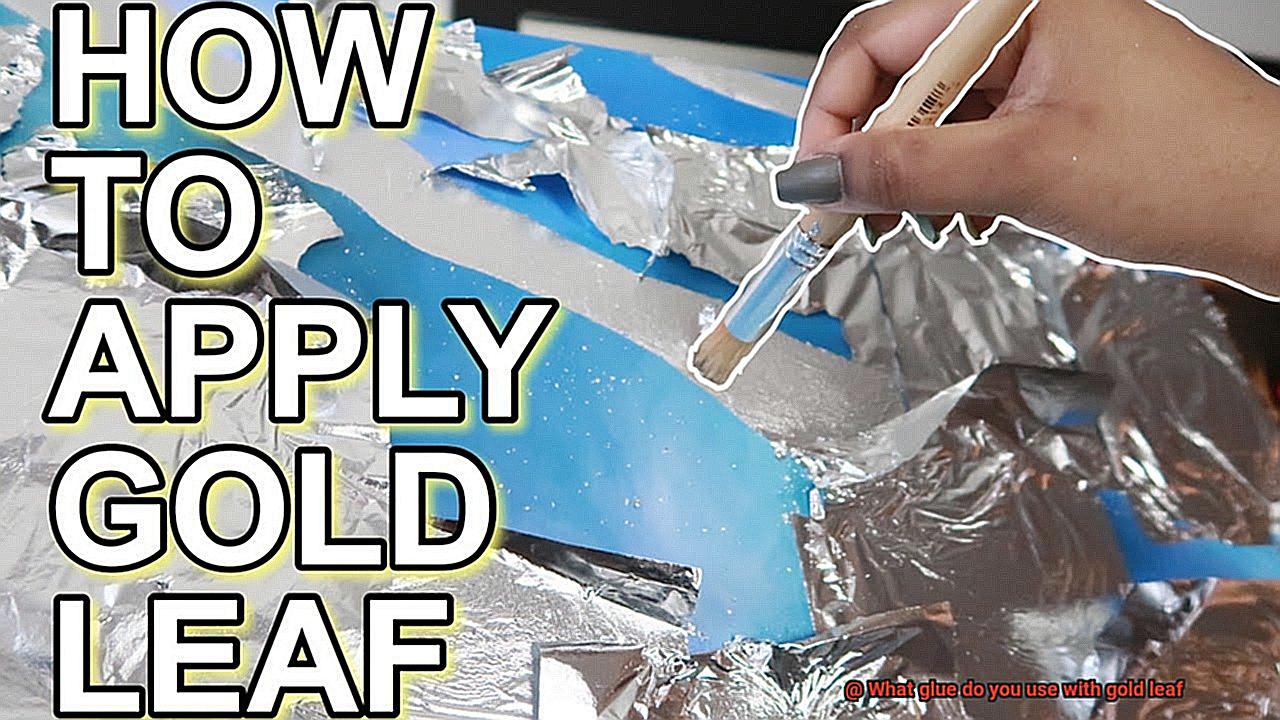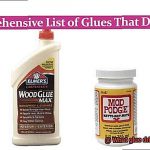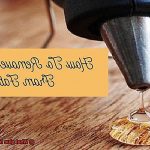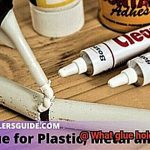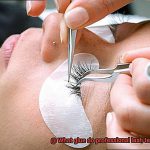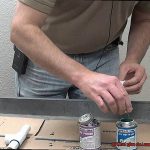Introducing the captivating charm of gold leaf to your project instantly takes it to a whole new level of elegance and allure.
But here’s the secret sauce: choosing the right adhesive is what makes all the difference. Whether you’re jazzing up frames, furniture, or even artwork, picking the perfect glue is the key to achieving a flawless finish.
In this blog post, we’ll dive into the world of gold leaf adhesives, uncovering the top options for creating a seamless and long-lasting bond. From water-based wonders to oil-based gems, we’ll explore their unique qualities, application tricks, and drying times.
Get ready to unleash your creativity and add a touch of opulence to your next artistic adventure.
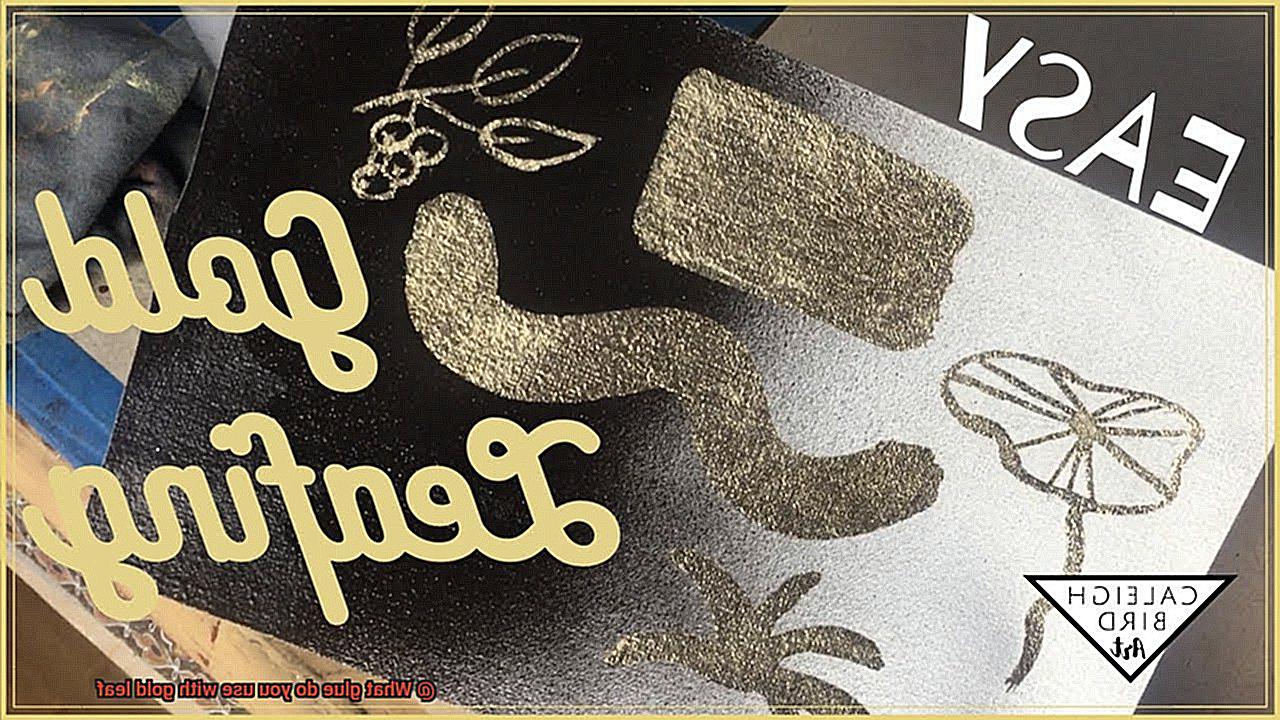
What Is Gold Leaf?
Contents
Gold leaf is a type of decorative material that has been used for centuries to embellish various objects, artworks, and architectural elements. It consists of extremely thin sheets of gold that are typically less than 0.1 micrometers thick. These delicate sheets are made by hammering gold into thin layers and then cutting them into squares or rectangles for easy handling.
The use of gold leaf dates back to ancient civilizations such as the Egyptians, Greeks, and Romans, who valued its beauty and symbolism. It was often used to adorn statues, religious artifacts, and even the tombs of pharaohs. Gold leaf continued to be popular throughout the Middle Ages and the Renaissance, where it was frequently used in religious art, illuminated manuscripts, and gilded frames.
Today, gold leaf is still highly regarded for its lustrous and opulent appearance. It adds a touch of luxury and elegance to various objects, including furniture, jewelry, ceramics, glassware, and even food. Gold leaf is also commonly used in architectural applications to gild domes, spires, and other intricate details.
There are different types of gold leaf available on the market. The most common is known as “genuine gold leaf,” which is made from pure 24-karat gold. This type of gold leaf is exceptionally thin and fragile, requiring careful handling during application. Another popular type is “imitation gold leaf,” which is made from copper alloyed with small amounts of zinc and pure gold. Imitation gold leaf provides a similar appearance to genuine gold leaf but at a lower cost.
In addition to its aesthetic appeal, gold leaf also possesses unique properties that make it desirable for certain applications. Gold is highly resistant to tarnishing and corrosion, allowing objects adorned with gold leaf to retain their brilliance over time. It is also an excellent conductor of electricity, making it useful in electronics and specialized industries.
What Is Gold Leaf Adhesive?
Gold leaf adhesive, also known as gold size or gilding adhesive, is a specialized glue designed specifically for attaching gold leaf to surfaces. It plays a crucial role in the art of gilding, which involves applying thin layers of gold leaf onto objects to create a luxurious and opulent appearance.
Gold leaf adhesive comes in various forms, including liquid, gel, and paste. Each form has its own unique characteristics and advantages, depending on the specific application and personal preference. These adhesives are typically composed of resins, solvents, and drying agents that enable them to create a strong bond between the gold leaf and the surface.
One commonly used type of gold leaf adhesive is oil-based adhesive. It consists of a mixture of oils, resins, and solvents that provide excellent adhesion and durability. Oil-based adhesives are ideal for outdoor applications or surfaces exposed to moisture or extreme temperatures since they have better resistance to these elements compared to other types of adhesives.
Water-based gold leaf adhesive is another popular option. It primarily consists of water and acrylic polymers. This adhesive is known for its ease of use and quick drying time. Water-based adhesives are generally more suitable for indoor applications or surfaces that are not exposed to excessive moisture or temperature fluctuations.
Gel-based gold leaf adhesive offers a thicker consistency compared to liquid adhesives. This makes it perfect for vertical surfaces or objects with intricate designs where a more controlled application is necessary. Gel adhesives provide good tackiness and allow for better maneuverability during the gilding process.
To ensure a strong bond and long-lasting results, it is important to choose a high-quality gold leaf adhesive from reputable manufacturers. It is also essential to follow the manufacturer’s instructions carefully since different adhesives may have specific application techniques and drying times.
Types of Gold Leaf Adhesives
Water-based adhesive is a popular choice for gold leaf application due to its ease of use and versatility. This adhesive is mixed with water to create a sticky paste that can be easily applied to the surface before placing the gold leaf. It is a versatile option that works well on various surfaces, including paper, wood, and canvas. Water-based adhesives are particularly favored for delicate or porous surfaces since they do not contain harsh chemicals that may damage the substrate. They are also beginner-friendly and easy to clean up.
Oil-Based Adhesive
For those seeking a traditional approach to gilding, oil-based adhesives are an excellent choice. Made from a mixture of oils and resins, these adhesives create a strong and durable bond between the gold leaf and the surface. They are especially suitable for larger projects or surfaces with rough textures. Oil-based adhesives provide a smooth and seamless application, but they do require longer drying times and proper ventilation during application.
Gelatin Adhesive
Artists and craftsmen often turn to gelatin adhesive when working with gold leaf on delicate surfaces like paper or fabric. Gelatin adhesive is made from animal collagen dissolved in warm water to create a sticky liquid. It offers a strong bond and allows for precise positioning and adjustment of the gold leaf. Gelatin adhesive is favored by those seeking a traditional approach to gilding.
Specialty Adhesives
In addition to traditional adhesives, there are specialty adhesives specifically designed for gold leaf application. These adhesives ensure even coverage and a secure bond, preventing any lifting or flaking of the gold leaf. They are formulated to meet the unique requirements of gilding projects, providing optimal results and longevity for the gold leaf.
Water-Based Gold Leaf Adhesives
Water-based gold leaf adhesives are a popular choice among artists and craftsmen for their ease of use, non-toxicity, and slower drying time. These adhesives offer several benefits and can be used effectively by following best practices.
One of the key advantages of water-based gold leaf adhesives is their easy application and clean-up process. They can be diluted with water, making them simple to work with and allowing for easy washing of brushes and surfaces. This feature is especially beneficial for beginners or those unfamiliar with using adhesives.
Additionally, water-based adhesives are non-toxic and do not emit harmful fumes, ensuring a safe working environment. This makes them suitable for use in enclosed spaces or by individuals with sensitivities or allergies to certain chemicals.
Another advantage is the slower drying time of water-based adhesives compared to solvent-based options. This characteristic provides users with more time to work with the gold leaf before it sets. It proves particularly useful when applying larger pieces or intricate designs, as it allows for precise placement and minimizes the risk of shifting.
To achieve optimal results when working with water-based gold leaf adhesives, it is essential to follow best practices. Prior to gilding, prepare the surface by ensuring it is clean and free from any dust or debris. This step promotes proper bonding and prevents imperfections in the final result.
When applying the adhesive, use a brush or sponge to create a thin layer that provides even coverage. The adhesive should be slightly tacky to the touch but not wet or dripping. This tackiness facilitates secure adherence of the gold leaf.
Carefully place the gold leaf onto the adhesive-coated surface, gently pressing it down with a soft brush or cloth. This method ensures precise placement and minimal shifting.
After applying the gold leaf, gently brush away any excess using a soft brush or cloth. Handle the delicate gold leaf with care during this step to avoid tearing or damaging it.
Lastly, allow the adhesive to fully dry before sealing or varnishing the gilded surface. This ensures that the gold leaf remains securely in place and prevents any potential damage or shifting.
Oil-Based Gold Leaf Adhesives
Oil-based gold leaf adhesives are a popular choice among artists and craftsmen for their unique advantages and considerations. These specially formulated adhesives provide a strong and durable bond with gold leaf, resulting in stunning gilded masterpieces that shimmer and shine with perfection.
One of the key advantages of oil-based adhesives is their longer open time. This means that you have more time to work with the adhesive before it dries, which is crucial when applying delicate gold leaf. The longer open time allows for greater precision and attention to detail, ensuring a professional-looking finish.
In addition to their longer open time, oil-based adhesives offer better control and coverage. They allow for smoother and more even application of the gold leaf, resulting in a flawless appearance. Before applying the adhesive, it is important to start with a clean surface free of dust or debris. This ensures optimal adhesion and prevents any imperfections in the final result.
To apply oil-based gold leaf adhesive, begin by applying a thin layer onto the surface using a brush or roller. This ensures an even distribution of the adhesive and prevents clumps or excess glue that may affect the appearance of the gold leaf. Once applied, you’ll need to wait for the adhesive to become tacky before applying the gold leaf. This usually takes around 15-20 minutes, but can vary depending on the specific adhesive you are using. To test if it’s ready, lightly touch it with your finger. If it feels sticky but does not come off onto your finger, it is ready for the gold leaf.
When applying the gold leaf, gently press it onto the tacky adhesive using a soft brush or your fingertips. The gold leaf should adhere easily to the surface. After applying, gently brush off any excess using a clean, dry brush. Be careful not to disturb or dislodge the gold leaf while doing this.
Once the adhesive has fully dried and cured according to the manufacturer’s instructions, which usually takes several hours to overnight, the gold leaf will be securely bonded to the surface. If desired, you can further protect the gold leaf with a clear varnish or sealer.
Acrylic-Based Gold Leaf Adhesives
Acrylic-based gold leaf adhesives are a popular choice among artists and craftsmen for their versatility and ease of use. Here are some key points about acrylic-based gold leaf adhesives:
- Quick drying time: Acrylic-based adhesives dry relatively fast, allowing artists to continue working without having to wait for extended periods.
- Clear, transparent bond: Acrylic adhesives dry clear, ensuring that the adhesive remains invisible once the gold leaf is applied.
- Excellent adhesion properties: Acrylic-based adhesives provide a strong and durable bond, ensuring that the gold leaf remains securely attached to the surface.
- Compatibility with various surfaces: Acrylic adhesives can adhere effectively to surfaces such as canvas, wood, metal, and more, making them suitable for different artistic and crafting applications.
- Varying consistencies: Acrylic-based gold leaf adhesives are available in different viscosities, allowing artists to choose the one that best suits their specific needs and preferences for application.
- Non-toxic and safe: Acrylic adhesives are water-based and do not release harmful fumes or toxins, making them a reliable and safe choice for working with gold leaf.
Choosing the Right Gold Leaf Adhesive
Choosing the right gold leaf adhesive is of utmost importance to ensure a flawless and durable application. When selecting an adhesive, there are several key factors that need to be taken into consideration.
First and foremost, the type of adhesive is crucial. There are different options available, including water-based, oil-based, and size adhesives. Water-based adhesives are favored for their ease of use and ability to dry clear. On the other hand, oil-based adhesives offer a stronger bond but require a longer drying time. Size adhesives, which are specifically designed for gold leaf application, come in both water-based and oil-based formulas.
Another important factor to consider is the compatibility of the adhesive with the surface you are working on. Different surfaces may require different types of adhesives for optimal results. For instance, while a water-based adhesive may work well on paper, it may not be suitable for use on metal or glass.
Drying time is another crucial aspect to think about. The speed at which the adhesive dries can vary depending on the type chosen. Water-based adhesives generally dry faster than oil-based ones.
The level of adhesion required is also a significant consideration. If you need a permanent installation, it is recommended to opt for a stronger adhesive. However, if you plan on removing or repositioning the gold leaf in the future, a less permanent adhesive might be more suitable.
Additionally, ease of use and odor should not be overlooked. Different adhesives have different consistencies and application methods. It is important to choose an adhesive that is easy to work with and aligns with your personal preferences. Furthermore, considering the odor of the adhesive is important, particularly if you are sensitive to strong smells.
Lastly, it is highly recommended to conduct tests and experiments before applying the adhesive to the entire surface. By doing so, you can assess how well the adhesive performs and ensure it is compatible with both the gold leaf and the surface. Experimenting with different adhesives can also help you find the one that works best for your specific project.
Applying the Gold Leaf Adhesive
Applying gold leaf adhesive is a meticulous process that requires attention to detail and careful execution to achieve a flawless and long-lasting result. Here is a step-by-step guide to help you master the art of applying gold leaf adhesive:
- Prepare the surface: Before applying the gold leaf adhesive, ensure that the surface is clean, dry, and free from any dirt or debris. A thorough cleaning will create a pristine canvas for the gold leaf to adhere to. If necessary, lightly sand the surface to create a slightly textured finish that promotes better adhesion.
- Choose the right adhesive: Selecting the appropriate gold leaf adhesive is crucial for a successful application. The most commonly used adhesive is gilder’s size, available in oil-based and water-based forms. Consider factors such as indoor or outdoor use, exposure to moisture, and drying time when making your selection.
- Apply the adhesive: Using a brush or foam applicator, apply a thin and even layer of gilder’s size onto the prepared surface. Avoid over-applying the adhesive, as this can lead to wrinkling or an uneven finish. Smoothly stroke the adhesive in one direction to avoid streaks or brush marks.
- Allow the adhesive to dry: Follow the manufacturer’s instructions to determine the appropriate drying time for your chosen adhesive. Patience is key here, as rushing this step can compromise the effectiveness of the adhesive. Let it dry completely before moving on to applying the gold leaf.
- Apply the gold leaf: Once the adhesive has dried and becomes tacky to the touch, delicately handle the gold leaf sheets using tweezers or a soft brush. With precision and finesse, place each sheet onto the tacky surface and gently press it down using a soft brush or your fingers. This ensures even and smooth adhesion.
- Touch-ups if needed: Take a meticulous approach when applying the gold leaf, but don’t fret if there are missed areas or imperfections. Simply apply a small amount of adhesive to those spots and repeat the process until you achieve the desired outcome.
- Let it dry: After applying the gold leaf, exercise patience once again and allow it to dry completely according to the manufacturer’s instructions. Avoid any temptation to touch or disturb it during this crucial drying period.
- Seal the gold leaf: To enhance its durability and safeguard against tarnishing, seal the gold leaf with a clear protective coating. Choose a sealant that is compatible with both the adhesive and gold leaf used. Apply thin, even coats of the sealant, allowing each layer to dry before applying the next.
- Final drying: Once you have applied the sealant, give it ample time to dry thoroughly before handling or displaying your finished piece. This ensures that all layers have settled and created a harmonious protective barrier for your gold leaf.
xerAJM4kZyE” >
Conclusion
In conclusion, the adhesive you choose for working with gold leaf is a critical decision that will determine the quality and longevity of your project. Fortunately, there are several options available, each with its own unique qualities and advantages.
Water-based adhesives are a popular choice due to their user-friendly nature, versatility, and non-toxic properties. They work well on various surfaces and offer a slower drying time, allowing for precise placement of the delicate gold leaf.
For larger projects or surfaces exposed to moisture or extreme temperatures, oil-based adhesives are the way to go. These provide a robust and durable bond that can withstand even the harshest conditions. However, keep in mind that they require proper ventilation during application and have a longer drying time.
If you’re working with delicate surfaces like paper or fabric, gelatin adhesive is your best bet. Artists and craftsmen favor this option for its ability to create a strong bond while still allowing for meticulous positioning and adjustment of the gold leaf.
To ensure an even coverage and secure bond without any lifting or flaking of the gold leaf, consider using specialty adhesives specifically designed for gold leaf application. These formulas are tailored to provide optimal results every time.
When choosing an adhesive, take into account factors such as the type of adhesive itself, compatibility with your chosen surface, drying time requirements, desired level of adhesion strength, ease of use, and any potential odor concerns. It’s always advisable to conduct tests and experiments before applying the adhesive to your entire surface to ensure the best possible outcome.
Applying gold leaf adhesive requires precision and attention to detail. The process involves preparing your surface thoroughly, applying thin layers of adhesive, ensuring complete drying before laying down the gold leaf, making any necessary touch-ups along the way, sealing the finished piece with a protective coating, and allowing it ample time to dry before handling or displaying it proudly.

